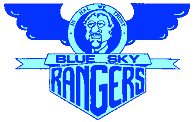Intellivision II
MASTER COMPONENT #5872

DEVELOPMENT HISTORY
There were three reasons for replacing the original Intellivision Master Component with the Intellivision II, developed under the code name Big Mac:
1. Redesigned circuitry that lowered the component count and, therefore, the cost.
2. Easier repairs by making the components most prone to failure - the power supply and hand-controllers - plug-in, replaceable parts.
3. An external video input on the cartridge port to make the System Changer possible.
(The plug-in controllers also provided an opportunity to propose alternate types of controllers such as track balls and light guns. While most of these never got beyond the brainstorming stage, a trigger-joystick controller - code named Dandelion - was shown at the January 1984 Consumer Electronics Show for a "proposed 1984 introduction.")
For game design, Intellivision II was supposed to be identical to the original - the main chips and their functions are the same as described for the Intellivision Technical Overview. But there turned out to be a major difference....
When Intellivision II was released, it was discovered that three of the Coleco Intellivision games on the market, Donkey Kong, Mouse Trap and Carnival, would not work on it. Why not? Mattel said it wasn't sure - maybe software changes needed for the System Changer to work were causing the problems....
But as more and more games in development at Mattel were found not to work with the Intellivision II, programmers were filled in on the truth - but only on a one-to-one, need-to-know basis. The reason the Intellivision II doesn't work with the Coleco games is that it was designed not to.
The EXEC contains a subroutine to display the Mattel copyright notice; the programmer merely needs to provide the year in a certain memory location. Since a competitor's game would not use this routine, that location could have anything in it. The Intellivision II EXEC checks on a particular bit in that location; if the bit isn't set, the EXEC doesn't allow the game to play. With a valid date in that location, the bit will be set; anything else and there is only a 50-50 chance the bit will be set.
This was a deliberate attempt to render competitors' cartridges useless, and therefore it may very well have been illegal. No one was to know. But as game size went from 4K to 8K and larger, more Mattel programmers started using special title screens that by- passed the EXEC copyright routine. These programmers had to be told to make sure the bit was set.
Of course, once the Intellivision II was on the market, competitors were able to figure out how to make their new cartridges work on it.

